The last day of an expedition is always marked by race, fatigue, and unexpected events, and this time was no exception. There’s always something new to capture, elements you wouldn’t want to miss, and a wealth of information that will inevitably be left out of the final project.
We hurried to capture the essential elements of Guapi, aiming to paint a vivid portrait of this town filled with sounds: the sound of the river, the music coming from the speakers of every business, the machinery, and the people laughing and conversing on street corners. Among its many sounds, the music of the Pacific stands out, competing side by side with salsa and reggaeton to capture the attention of an audience that gathers every night after a long day primarily dedicated to fishing, mining, and agriculture.
Living there, amidst apparent oblivion, are the most important representatives of the traditional music of this region of the country. Figures like “Gualajo” (R.I.P) and Genaro, known for taking the sound of the marimba to important international stages, wander through its streets, practicing other professions to make a living, and in some cases, reaching old age while waiting for government assistance that seems like it will never come.
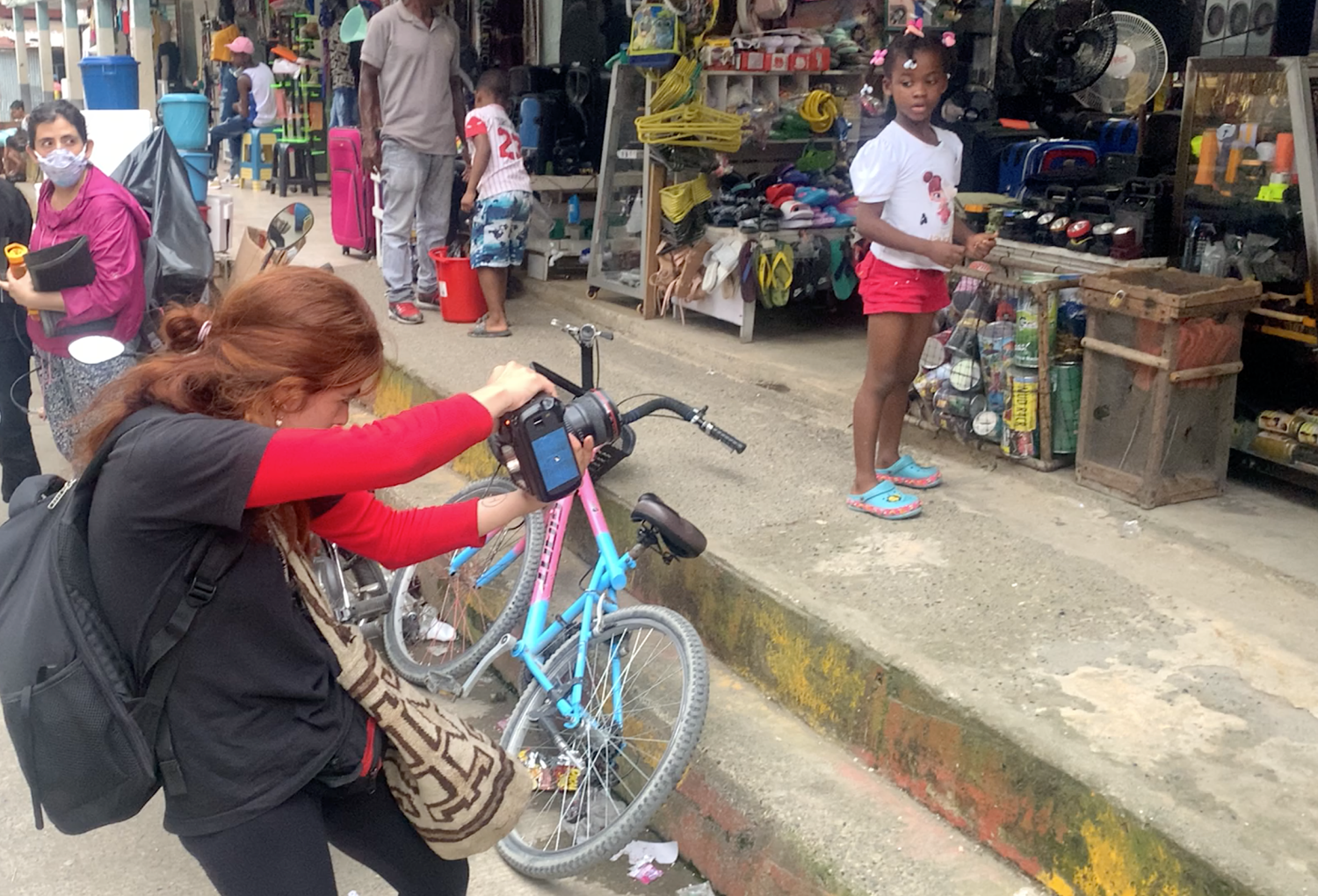
Together with Carolina capturing the last shots
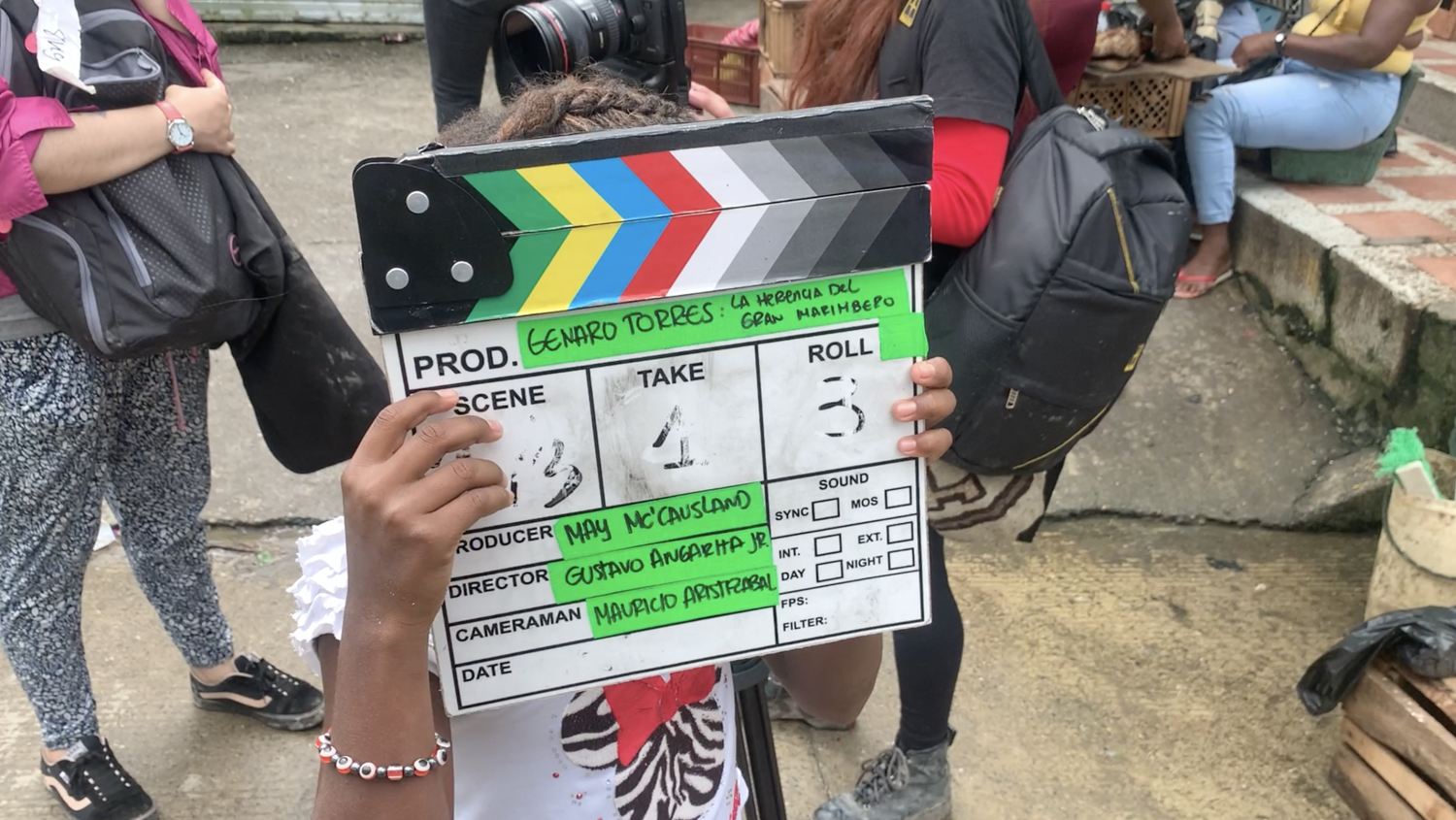
Last clappers, this was made by a girl.
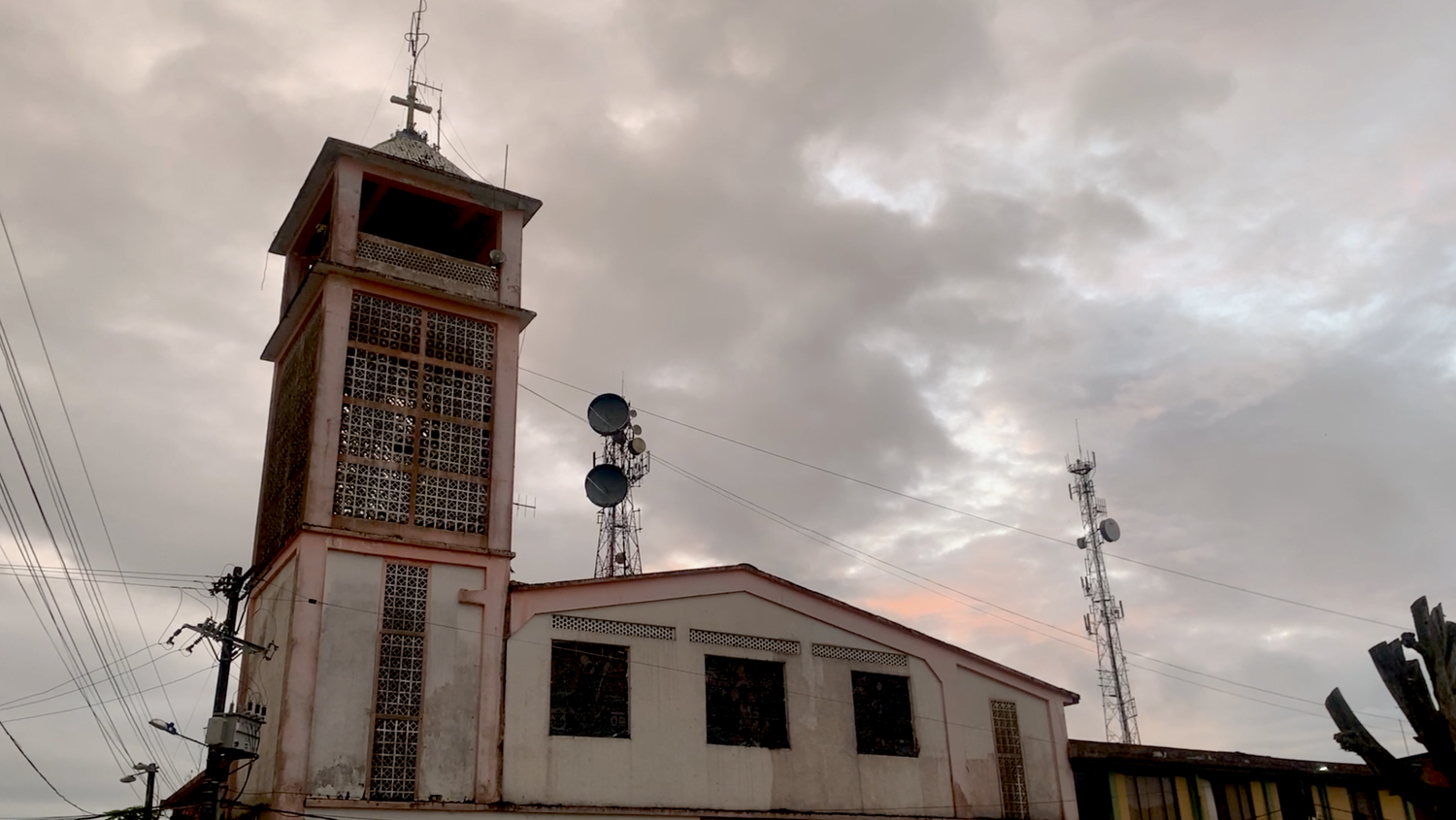
The cathedral, is in the municipal capital of Guapi.
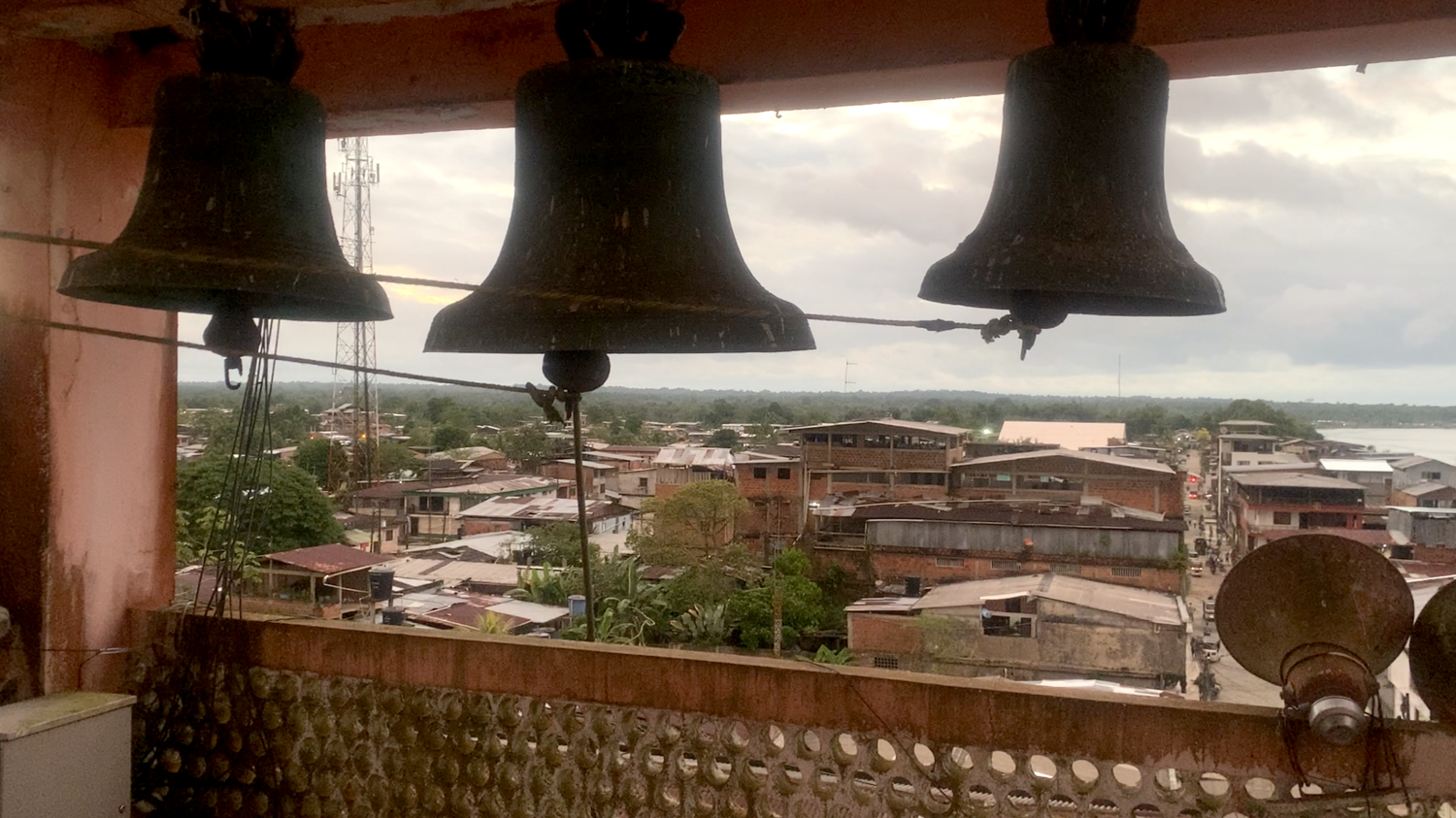
Cathedral bells
Among our goals for the documentary was to glimpse into the legacy of the knowledgeable ones and discover who will now carry the music of the Pacific to cultural stages. There was no one better to talk about this and introduce us to the young musicians and singers than Nany.
From the first day we met her, we sought the opportunity to speak with the members of the Tejiendo Saberes collective she leads in order to film them. We believed it was important for their stories to be part of the short film. However, as often happens with audiovisual projects, the unexpected occurs, and we were not satisfied with the quality of the footage obtained, which forced us to abandon that idea. Of everything we captured during the encounter, only the voices of two young individuals remained in the documentary: Jelen Nicolle Grueso Sinisterra and Leidy Micolta Hurtado, who arrived at the meeting we scheduled with Nany and the collective members. But let’s take it step by step.
The first thing that happened in that meeting was an interview with Nany. She spoke to us about the process, the young musicians, and the importance that the older. Generations pass down their knowledge and traditions to the younger ones. Nany emphasized the significance of preserving and promoting the music of the Pacific, as it is not only a cultural heritage but also a means of expressing their identity and struggles.
I can imagine the joy Maestro Genaro feels when they come to visit. He treats the newcomers like his own sons or grandsons, showing them the utmost kindness. Of course, you’ll be able to listen to what she told us on the podcast.
After this conversation, we had a chat with the girls, Jelen and Leidy. They shared with us the significance of having “La profe Nany” in their journey and how she played a crucial role in their decision to persist despite financial challenges and uncertainties about the future. It was remarkable to learn that “La profe Nany” is not only their mentor but also the talented songwriter behind many of the songs they perform. And, of course, we couldn’t pass up the opportunity to hear them sing.
Jelen Nicolle Grueso Sinisterra and Leidy Micolta Hurtado performing an a cappella cooing song in Guapi.
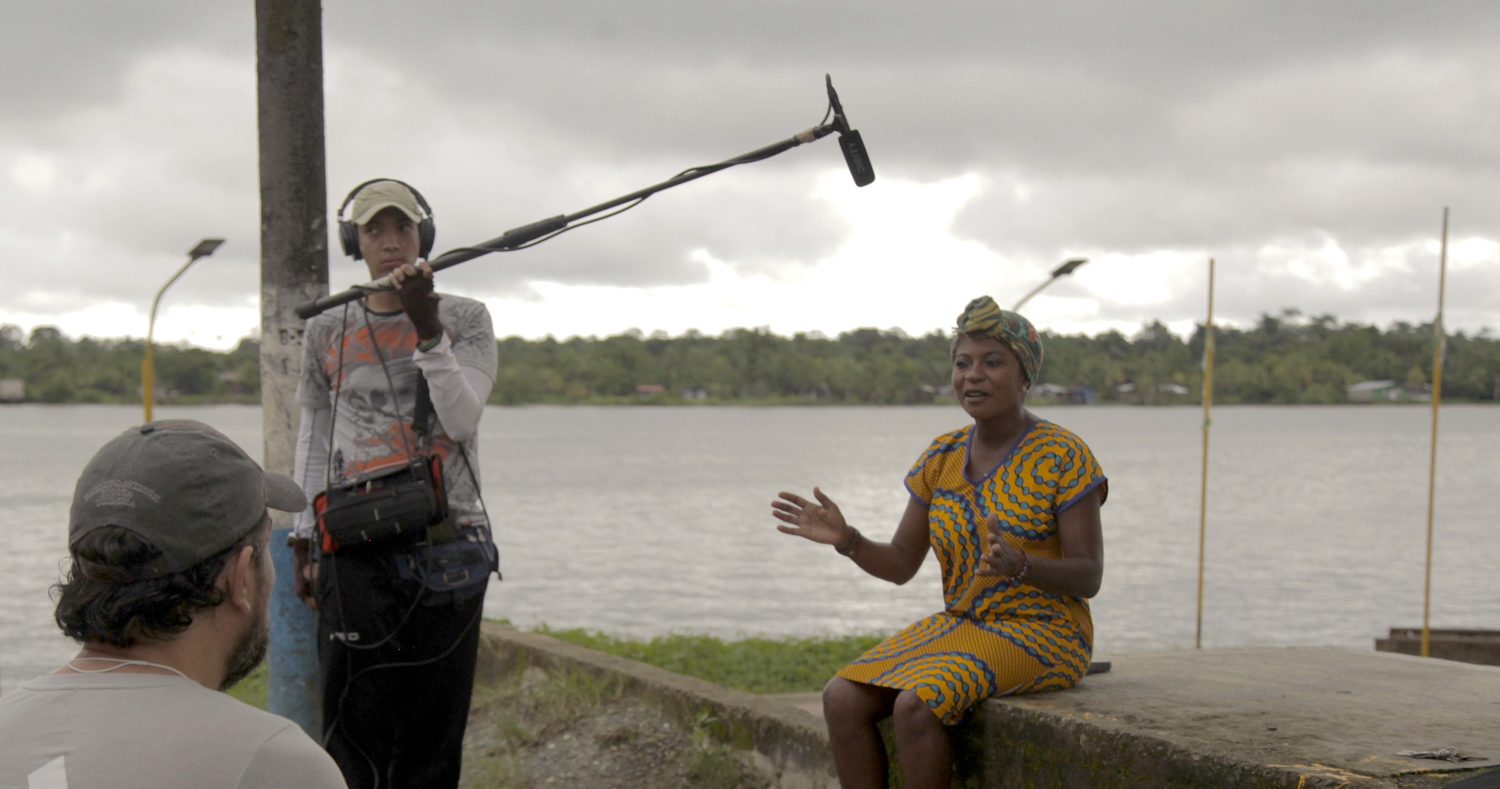
On the set with teacher Nany Valencia’s interview in Guapi.
Their melodic voices filled the narrow street adjacent to their practice spot. As they sang, their fellow musicians observed, and as always, I glanced at the people around me. Pedestrians strolling by couldn’t resist pausing to listen, including three individuals sporting UNO vests – coincidentally, the same ones I had spotted earlier having lunch at Teófila’s Raíces de Tierra y Mar restaurant. It was both beautiful and melancholic to hear them perform, evoking a bittersweet reflection on how folklore remains a challenging path, even for individuals as talented as them. This moment encapsulated the essence of their lullaby, which echoes in the opening of Genaro: The Legacy of the Great Marimbero documentary:
“The child in the cradle felt as if he were fading away,
and to ascend to heaven, he begged for a little water…”
The harmonious voices blend, drowning out the bustling activity and chatter of the surrounding crowd, as well as the background noise of speakers. All attention is captivated by the sheer force of their voices, their infectious rhythm, and the way they harmonize seamlessly, rendering instruments unnecessary. With their voices alone, they possess the ability to stir deep emotions within anyone who listens.
I hope that these words catch the attention of someone who can assist in transforming their talent into a lucrative profession. However, my faith lies predominantly in the voices and resilience of the local townspeople themselves. People like Nany, who guides these children through their growth process, along with community leaders in various fields, ranging from culinary arts to social activism and the establishment of cultural and technological enterprises. My wish is for these voices to reverberate strongly, reaching those who have the power to provide aid, and for the potent rhythms of the Pacific, be it in their popularized or original forms, to resound on global stages. Only then can the necessary change become a tangible reality.
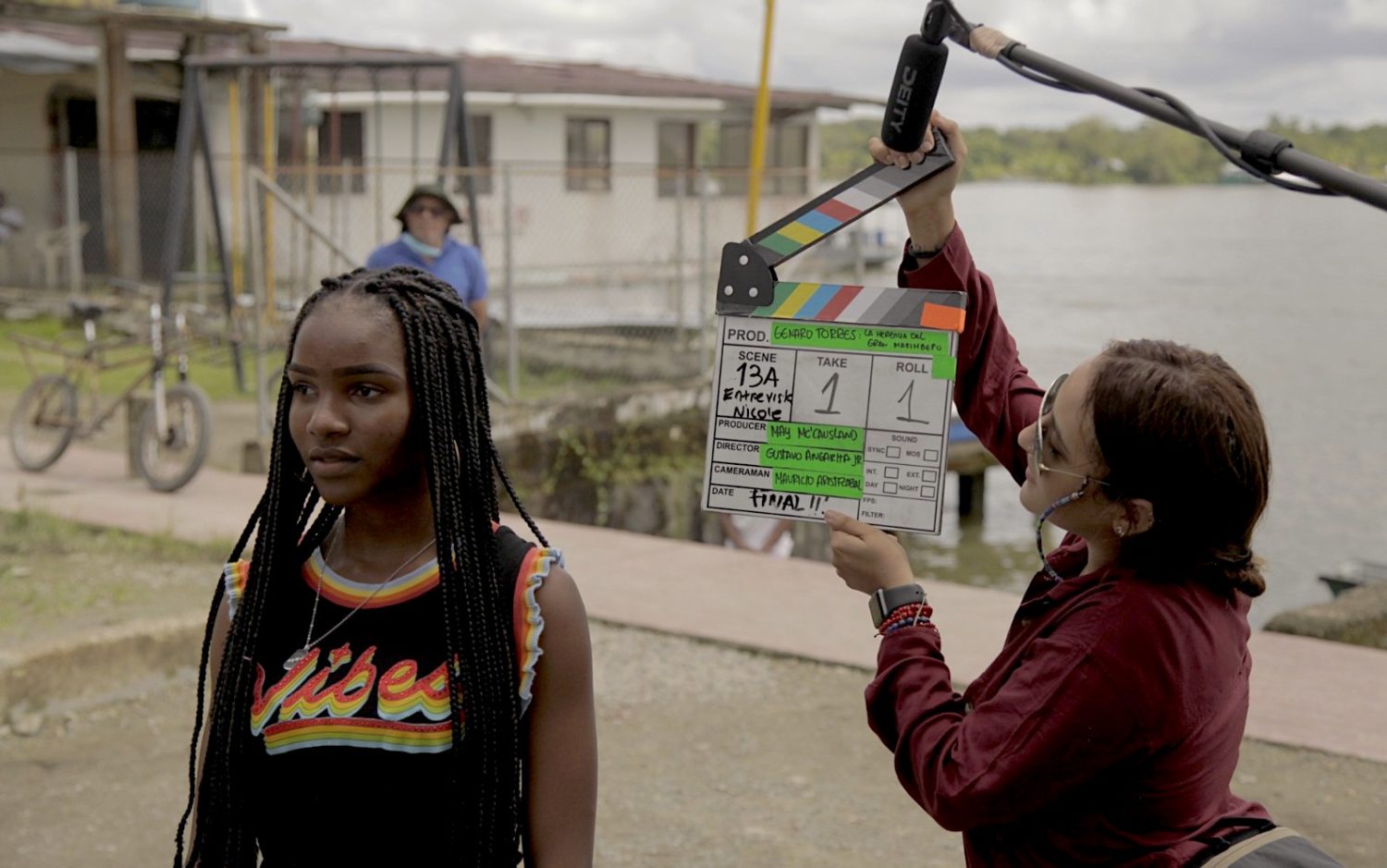
The last clapperboard of the Guapi Expedition, made by May.
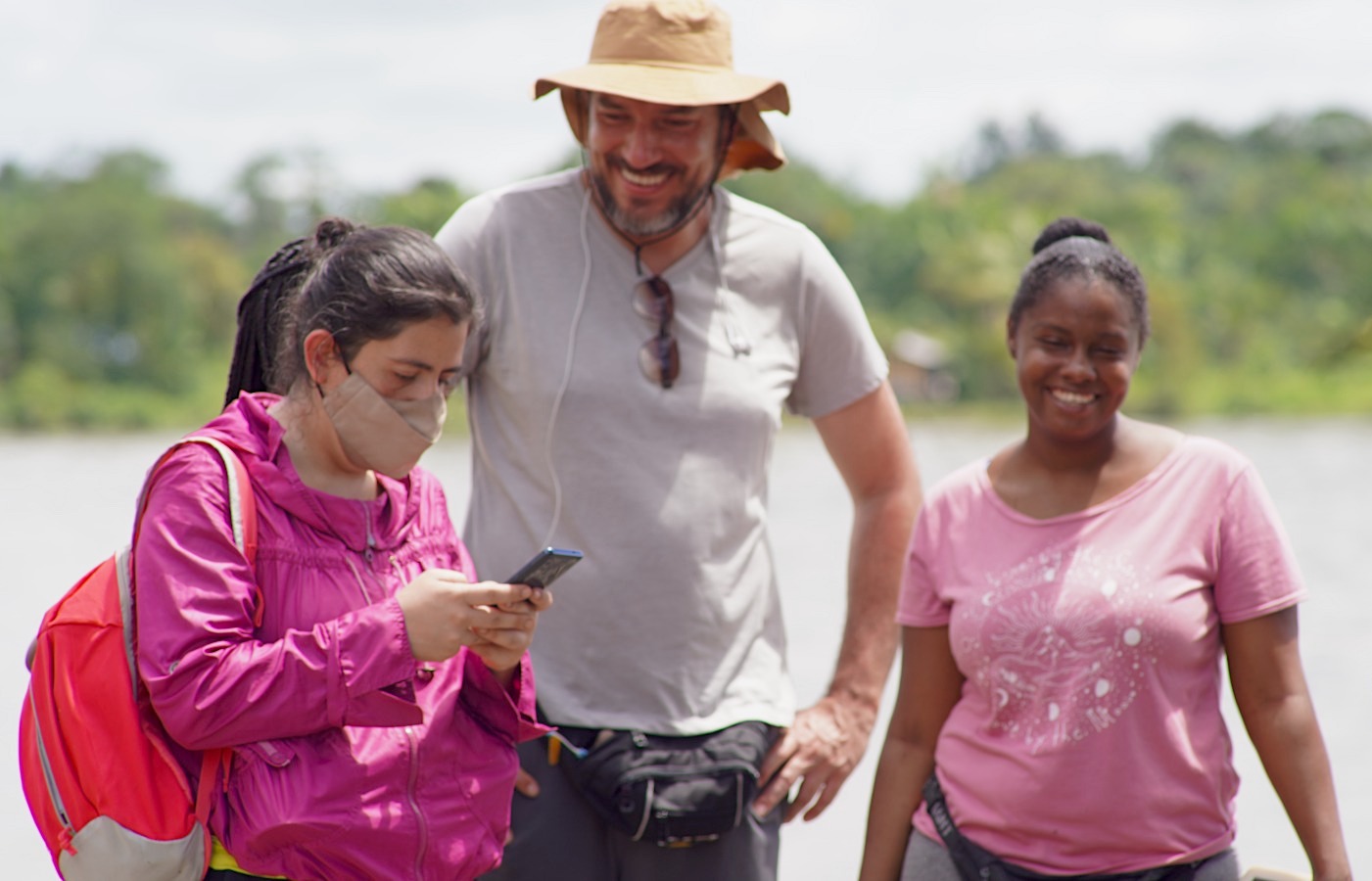
I writing data for this blog. With Leidy and Gustavo.
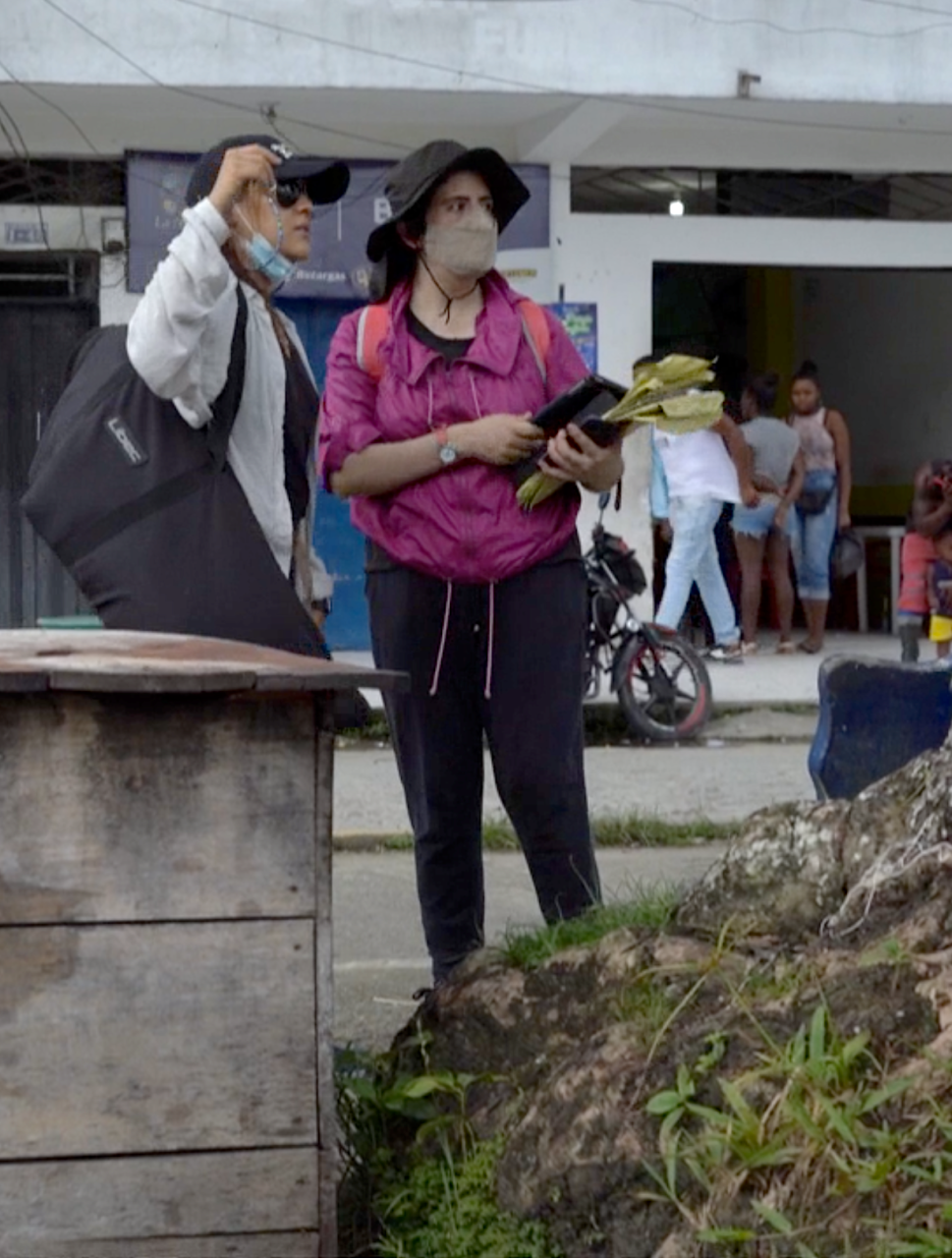
Shooting outfits in the territory. May and I are full of stuff!
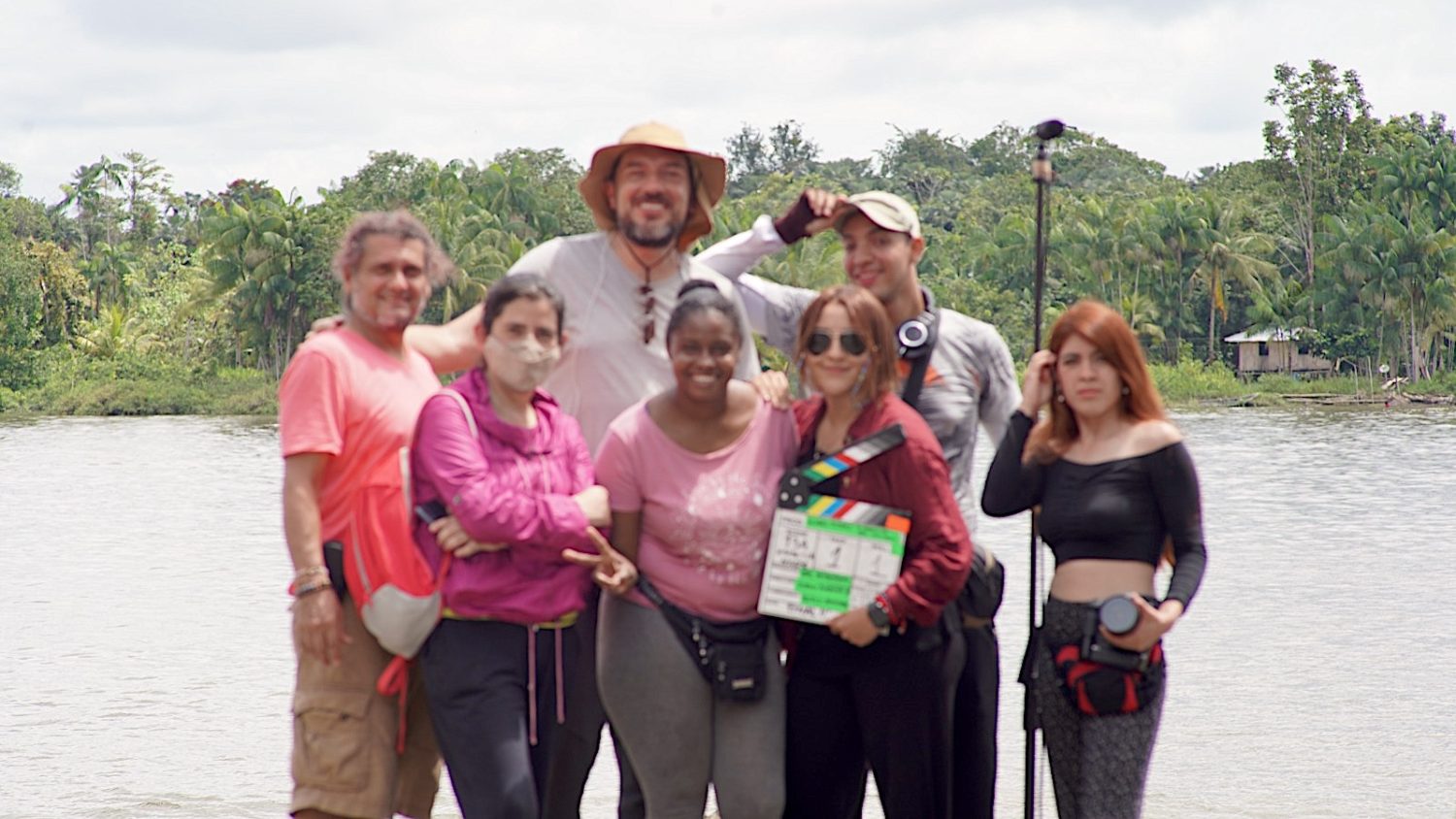
The entire film crew and Leidy, photo captured by Jellen. This is a wrap!
To conclude this expedition, there is an amusing anecdote that deserves to be included in this collection of memories. As I mentioned in the first blog post about Guapi, upon our arrival, May negotiated with a restaurant near the hotel, named La Maná, and from that day forward, most of our team’s breakfasts and lunches took place there. The owner of the restaurant, Doña Narlys Mosquera, is a Venezuelan migrant who has found a home and livelihood in that urban area. On numerous occasions, she offered us advice and assistance, such as guiding us to where we could purchase fruits for the vegetarian member of our group or raw chicken for the sancocho at the Torres’ house. I cannot recall if our budget allowed for chicken and fish or if we ended up opting for just fish, but the important thing is that she and her team had the intention to help us.
Every day, the entire team would gather at the restaurant, engaging in conversations and laughter as we prepared for the day’s journey. Gustavo, excited to be directing his first D.O. production, would speak in a commanding tone, drawing upon the power he has gained from his experience and training as a broadcaster and actor. As his voice is recognized by many, it grabbed the attention of those present, who turned to catch a glimpse of the tall, bearded man with a scout’s paba. They looked at him with a mix of disbelief, questioning whether he could be the person they thought he was. Spoiler alert: he was indeed that person. However, as he assumed the role of a director rather than an actor, people didn’t fully realize his identity. This worked to our advantage, saving us time and allowing us to stick to our schedule. In Cali, where he is recognized more quickly, we had to hold a fan meeting before proceeding with the plan, which, of course, caused a delay in our schedule.
Throughout our entire stay, we spent a considerable amount of time at the restaurant without arousing the slightest hint of curiosity from the staff. That is, until our final lunch on the day of our farewell.
I suppose one of the customers must have asked them. When I entered the restaurant that afternoon, armed with the necessary papers to complete the expense paperwork for the Cali Stimulus, the waitress glanced behind me, presumably checking if the others were with me, and asked if the tall man was the one they had seen on TV.
Upon hearing my confirmation, she cheerfully called the owner, exclaiming, “Yes, it is him! Yes, it is him!” The lady who was preparing the food emerged, looking somewhat bewildered. I had a feeling that something interesting was about to unfold, so I readied my cellphone to take a photo, and I was not disappointed.
While the girl explained that the man who was about to dine was Gustavo Angarita Jr., providing a brief overview of his filmography, the lady’s eyes and mouth widened as she realized his identity. Just as Gustavo entered the establishment and the lady caught sight of him, I quickly pressed the camera button. I captured her expression of surprise and excitement. They approached him with laughter to confirm his identity, while Mrs. Narlys, the restaurant owner, felt slightly embarrassed for not recognizing him earlier. I took a picture with Gustavo to commemorate the moment, and we signed all the necessary documents to settle the bill. We couldn’t afford any delays as we were right on schedule to gather our belongings and head to the airport.
We hurried to complete all our tasks, and in the blink of an eye, after the transfers and the bustling activity of moving the suitcases, we found ourselves back in Cali, ready to tackle the most challenging part of the project: finalizing and legalizing the short film while seeking resources to complete and publish our expeditions. This project is a labor of love, but with our small team and the need to devote time to other jobs and projects that sustain us, the post-production stage takes longer than we’d prefer.
That’s why today, nearly two years after our visit to Guapi, we are concluding this expedition while keeping our fingers crossed for a swift return to the area, so we can continue enriching these spaces.
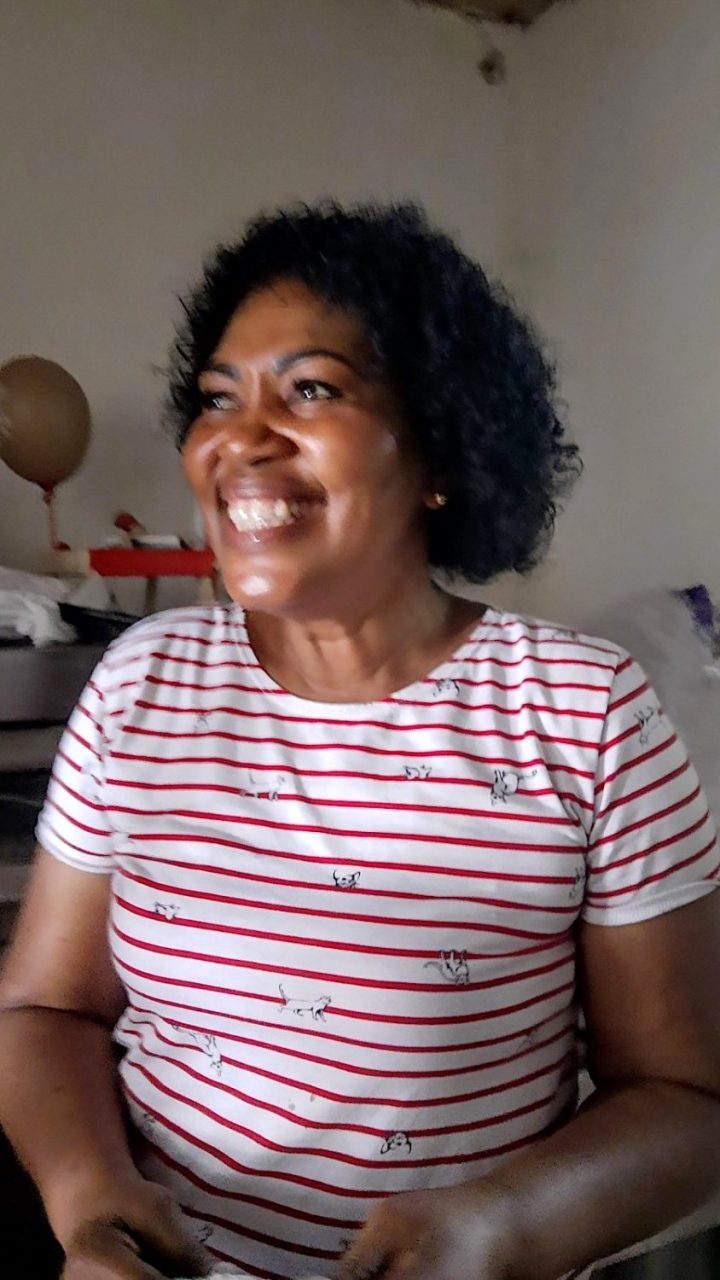
Mrs. Narlys’ happy face“He’s the TV actor!”.
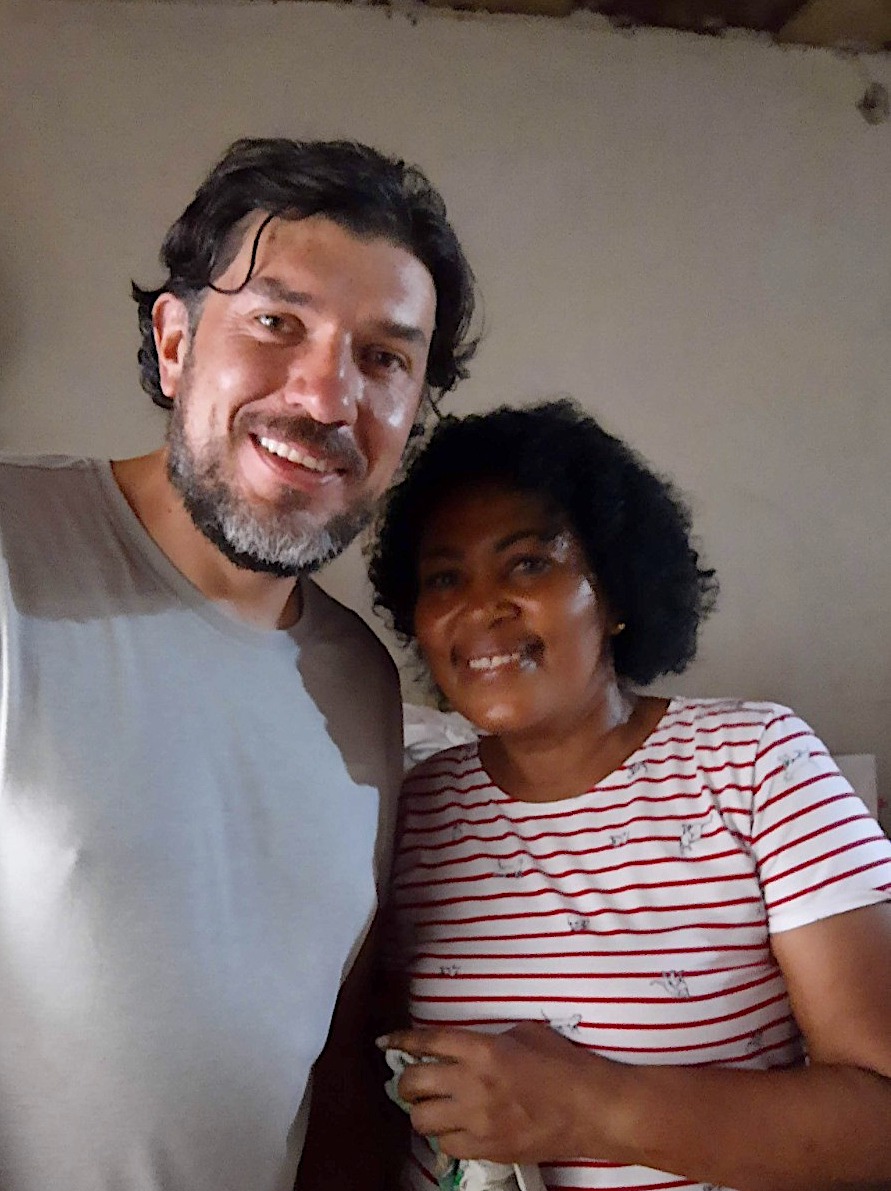
Gustavo and Mrs. Narlys.
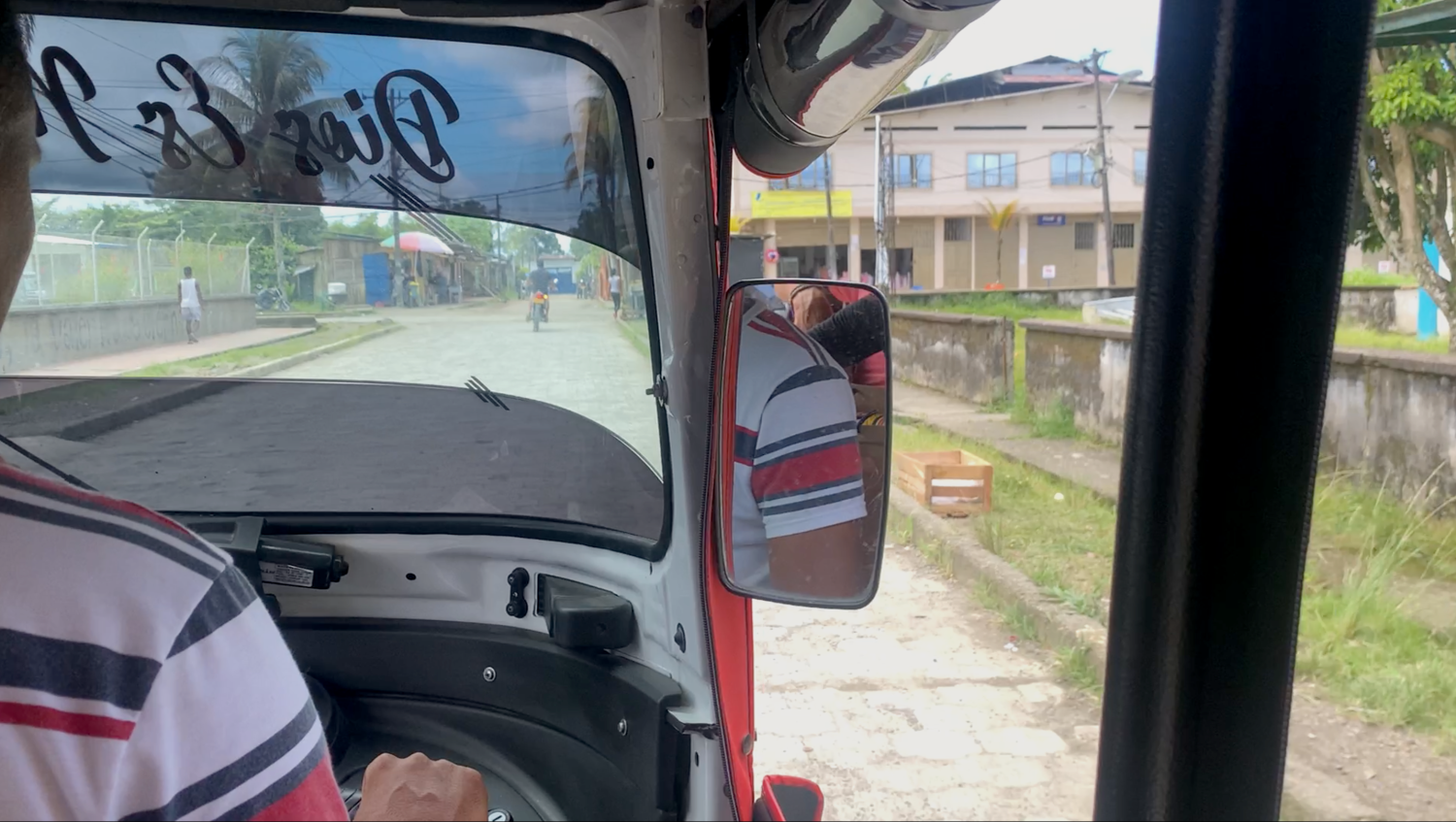
On the way to Juan Casiano Solis Airport by tuk tuk.
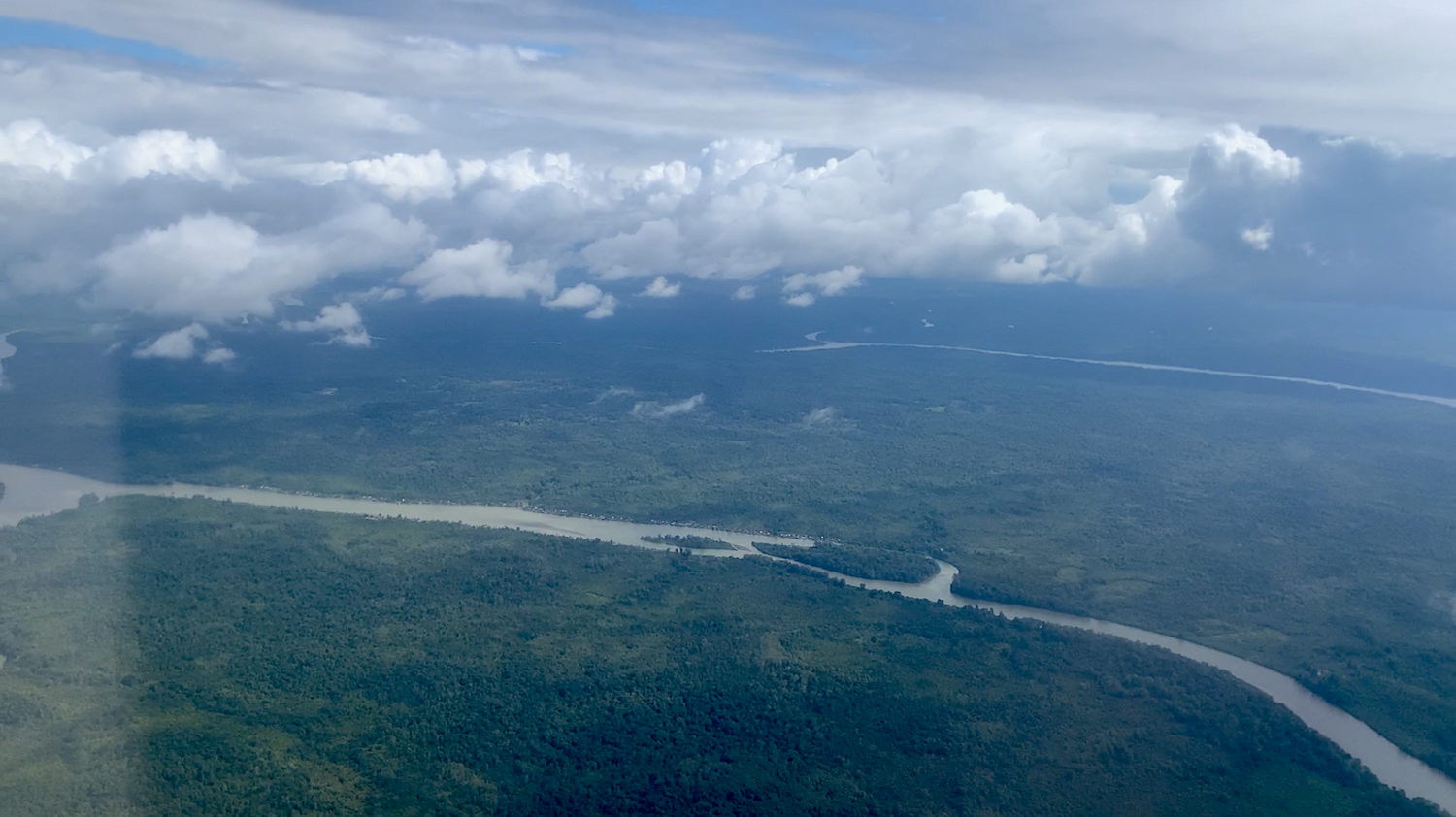
The last photo from the plane Goodbye Guapi!
To know the details of our visit to Guapi, the emotion experienced by everyone and the stories we found during this trip from the voice of the protagonists, do not forget to visit this special chapter of the podcast La Mochila Desgualanga´
Going back to the roots!
Special Chapter: Guapi
Written by: May Mc’Causland
Narrated by: May Mc’Causland and Gustavo Angarita Jr.
Recorded and Postproduced by: Simón Jaramillo of Vinilo Estudio.
Hello humans! As promised, I have compiled some photos, videos, interactive routes and links from the visit to Guapi, Cauca. What was the reason for the return of May’s Barranquillera and Gustavo’s “cachaco” to where it all began this adventure. And why it was so exciting to return to the Normal School, to the Vereda Sansón and to cross the Guapi River. There began this infatuation with the territories, exploring the culture, art and lifetime of the people, which motivated us to embark on this beautiful journey through the Colombian Pacific.
Thank you all for listening and reading us, we are happy to hear from you and we will be attentive to your messages. See you to continue exploring La Mochila Desgualanga’.

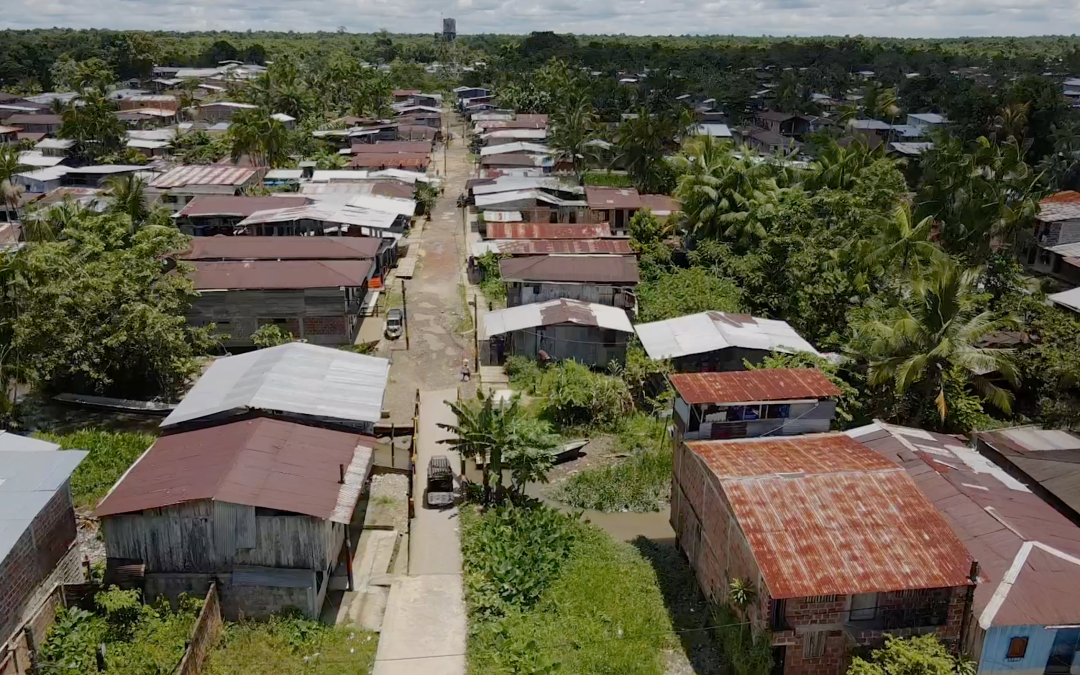
Comentarios recientes